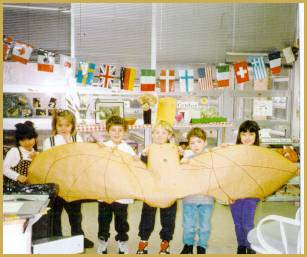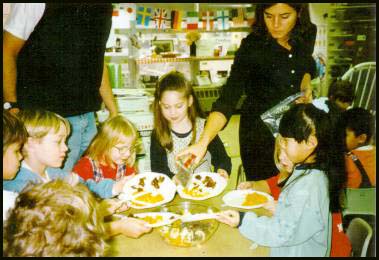Day Five A bat's wing is similiar to a human hand. We were able to see this by comparing a picture of a bat's bone structure to an x-ray of a human hand. We also used a ruler to measure some of the wingspan of different bats. Later in the day we worked in small groups making some of the biggest bats and some of the smallest bats in the world. We hung-up these bats on a bulletin board outside our classroom.
Day Six Bats eat all different kinds of food.
We learned that the terms nectarivory means a bat who eats nectar">
Day Five A bat's wing is similiar to a human
hand. We were able to see this by comparing a picture of a bat's bone structure to
an x-ray of a human hand. We also used a ruler to measure some of the wingspan of
different bats. Later in the day we worked in small groups making some of the
biggest bats and some of the smallest bats in the world. We hung-up these bats on a
bulletin board outside our classroom. Day Six Bats eat all different kinds of food.
We learned that the terms nectarivory means a bat who eats nectar, frugivory
identifies a bat that eats fruit, insectivory characterizes an insect-eating bat, and
piscivory describes a bat that eats fish. After we talked about the different types
of foods that bats eat, we made a bat fruit salad. We added banannas, mangoes,
dates, peaches, and carobs into our salad. Each of these foods represent products
from bat-dependent plants. The salad was delicious! |

